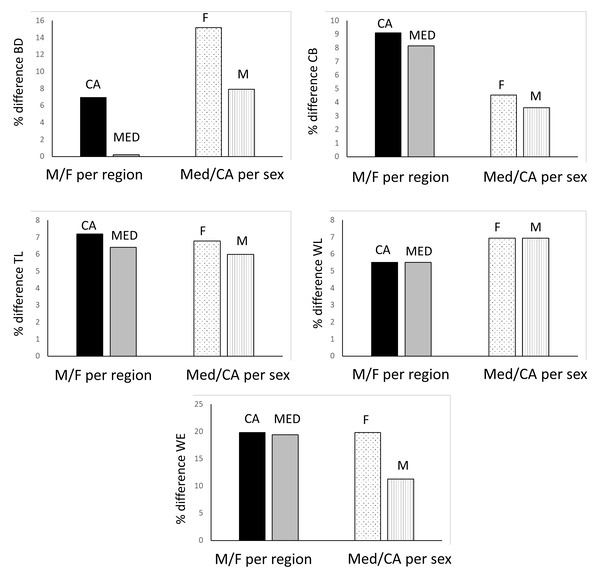 LINKED PAPER
LINKED PAPER
Yellow-legged Gulls from the Mediterranean are not only larger but also allometrically longer-winged than those from the Cantabrian-Atlantic. Marcos Pacheco, L., Tavecchia, G., Igual, J.M., Alonso-Álvarez, C., Arizaga, J., Galarza, A., Oro, D., Martínez-Abraín, A. 2023 Ardeola. doi: 10.13157/arla.70.2.2023.ra5 VIEW
Intuitively one would expect that Yellow-legged Gulls (Larus michahellis) from an oligotrophic sea, such as the Mediterranean, should have smaller body size than gulls from the same species in the Cantabrian-Atlantic region of Spain, well known by its abundance in marine resources for waterbirds, due to its large intertidal surfaces and the occurrence of nutrient-rich bottom upwellings. However, Mediterranean Yellow-legged Gulls are larger than Cantabrian-Atlantic gulls.
Ornithologists from past decades detected that difference and had the suspicion that Cantabrian-Atlantic gulls could have some genetic influence from the northern (smaller) European Herring Gulls (L. argentatus) – a fact that was proved false later on by Pons et al. (2004).
The observed size differences (large enough to become obvious to the naked-eye), motivated the taxonomic differentiation of gulls from both populations as different subspecies, based just on expert opinion, at the end of the 1970s of the 20th century.
Some authors provided empirical evidence of biometrical differences later on, although neither separating by sex, a serious problem in a species with a large sexual dimorphism, or separating by sex but relying on relatively small sample sizes (notably Pons et al. 2004).
In our study, we verified that Mediterranean gulls are indeed larger than Cantabrian-Atlantic gulls in all variables measured (weight, tarsus length, wing length, cranium-bill, bill-depth) by using a large sample size (>1,500 adult birds coming from 18 different colonies) and accounting for sex. We also confirmed that males are much larger than females in both regions.

Figure 1 —Boxplots comparing a) Bill Depth (mm), b) Cranium-Bill (mm), c) Tarsus Length (mm),
d) Wing Length (mm), e) Weight (g) and f) Wing length/Cranium-bill Ratio of Cantabrian-Atlantic
and Mediterranean Yellow-legged gulls (Males: grey boxes; Females: white boxes). Dots are outliers
and asterisks represent extreme values. Boxplots depict medians (50%), interquartile intervals (25% and
75%) and ranges (maximum and minimum).
We determined, for the first time, that the magnitude of the differences was quite constant in most variables measured, around 7%, regarding both differences between regions (irrespective of sex) and between sexes (irrespective of regions).
Differences in weight between regions were much larger than in all other variables and, in the case of females, were as large as the differences between males and females within populations (20%).

Figure 2 —Percentage differences in Bill Depth (BD), Cranium-Bill (CB), Tarsus Length (TL), Wing Length (WL) and Weight (WE) between sexes in each region and between regions for each sex. MED: Mediterranean region; CA: Cantabrian-Atlantic region; M: Male gulls; F: Female gulls.
The magnitude of the inter-regional differences was found to be larger for females than for males (as females were farther from potential functional limits by being smaller than males), but not in the case of wing length, indicating that plasticity in the “flight apparatus” was especially constrained, being similar between sexes.
We interpreted the consistency in the magnitude of differences between regions and sexes as some kind of maximum functional constraint, and suggest that the size of the effect detected could be used in the future as informative priors in Bayesian analyses or in a priori frequentist power tests when comparing gull species from different populations.
Additionally, we found that Mediterranean gulls were not only larger but had (in relation to structural body size) longer wings than Cantabrian-Atlantic gulls. Moreover, females, in both populations, were longer-winged than males.
We suggested that differences between populations in this trait could be explained by the fact that Mediterranean gulls are partially migratory, whereas those in the Cantabrian-Atlantic population are resident. Differences between sexes in wing length could be an adaptation for longer foraging trips by females to avoid competition with larger males.
Explaining why Mediterranean gulls were larger in other body traits was trickier, but we suggested that a larger body size could represent a competitive advantage in the unknown environment of the Cantabrian-Atlantic.
Previously, we discarded other explanations, such as differences in availability of anthropogenic food per capita between regions, because both areas had similar population sizes and large landfills in the past. Latitudinal explanations (related with Bergmann’s rule) also did not apply as colonies from both regions were too close in latitude.
New information available in the future on cumulated flight effort and foraging competition is necessary to test the hypotheses derived from our biometrical work.
References
Pons, J.M., Crochet, P.A., Thery, M. & Bermejo, A. 2004. Geographical variation in the yellow legged gull: introgression or convergence from the herring gull? Journal of Zoological Systematics and Evolutionary Research 42:245-256. VIEW
Image credit
Top right: Cantabrian-Atlantic Yellow-legged Gull (Larus michahellis lusitanius) © Alejandro Martínez-Abraín.
If you want to write about your research in #theBOUblog, then please see here.




